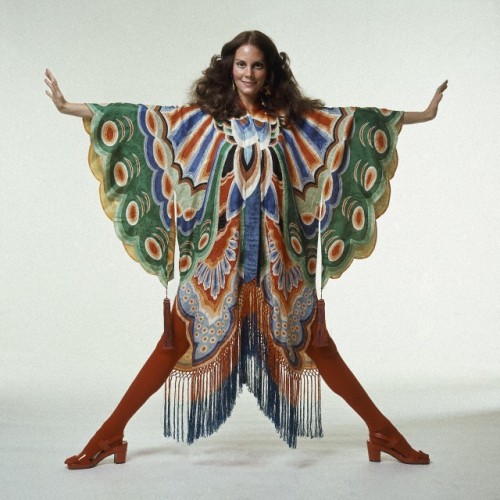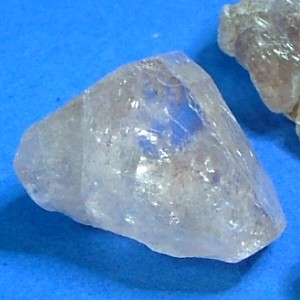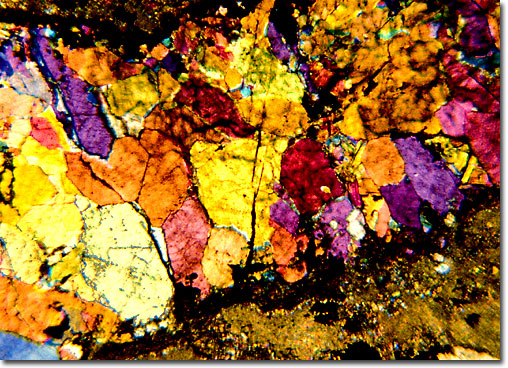I realize that my blog hiatus interrupted the Birthstone parade and so I will catch up as I can without waiting until November and December. This will give you November and December babies time to plan ahead and drop plenty of hints!
Until recently, topaz shared its name with almost any yellowish stone. It was (and still is) often confused with citrine and for that reason the more saturated yellow and orange stones were called "precious topaz". We now know that topaz comes in a range of colors, from colorless to yellow to brown to pink and blue. The rich yellows to medium orange-peachy colors are still considered "precious topaz". The colorless and pale blue stones are the most commonly found natural topaz with the yellows, pinks, and the reddish topaz stones being much more rare. These more saturated stones are mined almost exclusively in Brazil. So let's delve into the world of topaz.
Al2SiO4(F,OH)2 : aluminum, silicon, oxygen, flourine, hydrogen. That's our gal- Aluminum fluosilicate. In other words, a silicate mineral (think silicon = sand) with the elements aluminum and flourine. So simple, right? Oh I wish. Topaz forms from either a metamorphic process in which the original rock is subjected to high temperatures and pressure, thus changing the very physical or chemical make up of the rock, or by an igneous process. Igneous rocks are formed by the solidification of magma. Our topaz is generally associated with silica-rich magma that crystallizes in granite pegmatites. Pegmatites are intrusive rocks, usually granite, that cool late in the solidification process and generally have large crystals. That means there are some big honkin' topaz out there, with crystals/boulders ranging up to a few hundred pounds. In other words, topaz forms from the flourine bearing-vapors and magma during the last stages of solidification. So they are found not only in the intrusive pegmatites but also alluvial planes around old volcanic sites. Topaz is not smoky quartz. Confused? I'm sorry but I just love this natural history stuff. OK- let's move on before I loose ya.
 |
The American Golden Topaz, an example of a big honkin' topaz.
Image via Epic Swag
House in the Natural History Museum at the Smithsonian. |
Yellow topaz is traditionally the birthstone for November while blue topaz is the stone for December. Topaz is most commonly an amber color. As mentioned, however, topaz can be found in a variety of colors depending upon various trace elements within the stone. For the sake of interest and variety, we will consider topaz in all of its hues in this post and for December we will look at its alternative birthstone, turquoise. But again, we won't wait until December for turquoise. If you weren't born in either of those months, topaz is also the stone for the 9th and 14th wedding anniversaries. If you are single- hell sister, just go get you one.
Topaz gets its name from the Topazos Island (or Zabargad, Zebirget, Topazios) in the Red Sea off of Egypt, the old names for St John's Island, where it was believed to have been first mined. Or it may come from the Arabic word meaning "to seek" as the island was often shrouded in fog and difficult to find. But then there is the Sanskrit word tapas meaning heat or fire. At any rate, it is interesting that this particular island is not volcanic, as one would suspect for a gemstone formed of cooled magma, but rather is uplifted mantle. The stones found here were most likely citrine, periodite, chrysolite, or some other stone. Today, Brazil is the largest topaz mining location in the world, with some stones reaching boulder size and weighing several hundred pounds. Topaz is also mined in Australia, Namibia, Nigeria, Russia, Pakistan, Brazil, and the U.S.A. (California, New Hampshire, Utah).
During the eighteenth century more than half of the world's supply of gold was removed from the hillsides surrounding the Brazilian town of Oro Preto. These same hills hold almost the entire world's known commercial reserves of Imperial and Precious topaz. Topaz is generally mined by open pit mining. The mining of topaz is strongly associated with tin mining, a mineral needed to create bronze (an alloy of copper and tin) and it is almost certain that the people in the middle-eastern bronze age would have known about this gemstone.
Let's talk about some of our topaz colors. Pure topaz is actually colorless and is the most common type, found in China, Sri Lanka, Brazil, Nigeria and India. It is sometimes called white topaz but it is colorless. Perhaps the most famous topaz is the Braganza topaz, a huge colorless topaz originally thought to be a diamond and said to have been set in the Portuguese crown. Or not. Much debate has raged about the "Braganza Diamond" since its discovery in 1797. At 1680 carats, it would have been by far the largest rough diamond in the world. The debate still rages on. I would love love love to share a photo of this but cannot. You see, it appears that the 1680 topaz has been misplaced. I know, right? I know where my puny little rocks are at all times of the day so how one misplaces such a behemoth is puzzling. It has to do with Napoleon and deposed Portuguese rulers and escapes to Brazil, all of which you can read about in detail at
Internet Stones. It actually is interesting, especially if you're a history freak (a-hem).
Pink topaz occurs naturally in Pakistan and Russia, and is occasionally found in other locations. Pink topaz is usually pale pink; anything that is described as "hot pink" or "bright pink" is artificially treated or heated to produce the enhanced color. Heating some shades of pink topaz will remove the orange color and will leave a lavender colored gem.
(Source The Many Beautiful Colors of Topaz). Natural pink topaz are very rare indeed and quite costly. Most pink topaz on the market have been treated. I personally don't care because pink is pink, but if you want to remain natural, it's gonna cost ya.
Blue topaz generally starts as a very pale blue gem and is treated to enhance its color. This treatment involves irradiating the stone first and then heating it to stabilize the color. An electron bombardment in a linear accelerator produces a sweet blue called Sky blue. Neutron bombardment in a nuclear reactor produces the dark dusky color called London blue. A combination of both processes gives us the nicely saturated Swiss blue. Neutron bombardment leaves the stone somewhat radioactive and the stones must be held for a year or so to allow them to "cool." Almost all blue topaz on the market, especially the richer colors, have been treated and there is no way at this time to determine whether or not a stone has been treated. Blue topaz is generally modestly priced. Blue topaz, as mentioned, is the birthstone of December (along with turquoise) as well as the state stone of Texas and Utah.
Ah, the Imperial topaz. The rarest and therefore the most valuable, of topaz, Imperial topaz is marked by its distinctive orange, pink, peachy, champagne colors. Mined primarily at the Ouro Preto mines of Minas Gerais, Brazil deposits are also located in the Ural Mountains of Russia and in Pakistan. When first mined in Russia, only the Imperial family was allowed to own them, hence the name. True Imperial topaz is never treated and any topaz with these colors cannot be called Imperial if it has been treated. Because of its resemblance to the
Padparadscha Sapphire (my very number one favorite gem), this is naturally my favorite topaz. Imperial topaz is the anniversary topaz for the 23rd wedding anniversary. Hmmm- 6 more years to go.
Mystic topaz is a colorless stone that has a very thin layer, only microns thick, layer of titanium applied to the pavilion, or underside, of the gemstone. The reflective nature of the coating causes light to reflect through the gemstone prisms, creating the rainbow effects. Mystic topaz is not considered a man-made stone but neither is it a natural stone. It is enhanced. Production of mystic topaz is strictly limited by the patents of the company, ACT, Inc that invented the process. While topaz is very hard, the titanium coating is very thin and can be easily scratched. I don't generally care for mystic topaz; it looks way too fake, like something you would get from a vending machine. Wow- that's the strongest negative opinion I've given about a gemstone. Oh well, someone has to be last!
So what about the mystery and mystique of topaz? Our stone has been known and documented for over 2000 years. Ancient Egyptians associated the topaz with the color of the sun god Ra and they also wore it as an amulet to protect them from injury. The Greeks associated the topaz with their sun being, Apollo.
The powdered stone was put in wine and used as a cure for asthma, insomnia, burns and hemorrhage. It was regarded as the stone of fruitfulness and faithfulness and one that conferred cheerfulness on the wearer. It was supposed to calm passions and prevent bad dreams. The topaz was believed to warn of poison by changing color. It was said instantly quench the heat of boiling water; you could immerse your hand, supposedly, in boiling water after a topaz was thrown in and you would suffer no burns. All these magical powers were supposed to increase or decrease with changes of the moon. During the Middle Ages, topaz was thought to heal mental disorders and prevent death. The Greeks believed it had power to increase strength and to make its wearer invisible while the Romans believed it had power to improve eyesight, cure insomnia and respiratory ailments. It was also believed to be an effective talisman against accident and fire, and to bring increased intuition and long life. To Christians, it was known as a symbol of uprightness and virtue and was the the stone that represented the apostle Matthew. In ancient times, a figure of a falcon carved on a topaz was thought to help earn the goodwill of kings, princes and magnates. Ancient people believed that topaz stones can easily attract love and devotion and was also considered as the stone that honed the creative juices of the wearer. The Hindus believe that worn as a pendant, this gemstone will relieve thirst, sharpen intelligence and lengthen ones life. In 1255, St Hildegard of Bingen, the famous mystic, offered a simple remedy for failing eyesight: steep a topaz in wine for three days and then lightly rub it over the eyes. Topaz has been said to be an ideal stone for travelers, protecting them from homesickness and danger. Ancient Romans credited topaz with preventing sickness of the chest and abdominal pain. Set in gold and worn around the neck, topaz is reputed to dispel bad omens, heal poor vision and calm anger.
Today, people who believe in the healing powers of stones believe that topaz stimulates the endocrine system and assists in general tissue regeneration. It is also said to increase poor appetite and help fight blood disorders. It is supposed to release tension and give feelings of joy. Topaz is known as a spiritual rejuvenation gemstone. It has been said that dreaming of topaz may indicate that good fortune is on its way. These dreams can also suggest love affairs.
 |
High magnification of topaz. The thin striations are the cleavage planes.
Image via Gemology Online |
Topaz is a relatively hard stone (Mohs 8) which makes it good for use in jewelry. However, because of the internal structure of the topaz crystals, topaz has what is called perfect cleavage. Cleavage describes how a stone breaks apart when subjected to stress. If it leaves a smooth edge, it has cleavage. If the stone breaks apart without any crystallized fragments, it does not have cleavage. Minerals with perfect cleavage will cleave without leaving any rough surfaces; a full, smooth plane is formed where the crystal broke. Topaz has what is called basal cleavage, meaning that it will break perpendicular to the mineral axis of its internal structure. It cleaves easily in one direction. Mica is another example of perfect cleavage.
So, did you catch that- "easily fractures". One good whack can split your stone in half, just like a diamond. Look for settings that will protect the stone. Of course you do not want to wear your topaz, or any other good gems, while spelunking, gardening, operating a jack hammer, de-greasing your car engine, playing football, bleaching the laundry, building a campfire, mountain biking...... you get it, right? Avoid sudden changes in temperature and store your topaz out of the light since sunlight can cause it to fade. Also avoid even moderate heat. Remember that heat-treating yellow topaz at even moderate tempatures will turn it pink (not so bad in my pink-loving estimation but you know what I mean). Clean your topaz in a mild dish detergent. Never use a steamer or ultra-sonic cleaner as topaz often has liquid inclusions which may explode in these types of cleaners. Store topaz in its own padded box, jewelry box compartment, or wrapped in a soft cloth. Store out of sunlight. When wearing your topaz, put it on last, after your have applied any and all lotion, hairspray, perfume, or make-up. Take it off first. You know- last on, first off.
The best stones tend to be priced at about 500 US dollars (USD) per carat. Stones larger than 2-3 carats have a larger per carat price. Imperial topaz stones of best quality may cost considerably more, and may run as much as 1000 USD per carat.
So- ready to roll with topaz? Let's go window shopping...
 |
Left- the Lindsey uncut topaz 32 kg/70.4 lbs, Center- American Golden Topaz, Right- Freeman uncut topaz, 50kg/110 lbs.
All three are at the Natural History Museum- Smithsonian Institute. Image via Internet Stones Blog. |
 |
| Natural light blue topaz. 48.5 carats. Image via Yenzshop |
Here we go ...
OK, so there you go. I must say that topaz never caught my eye much. It seemed so... tan. But now I think I have a better appreciation for November's birthsone. I mean, after all, it comes in pink!
Thanks for taking a look today and please flutter on by again.






























































